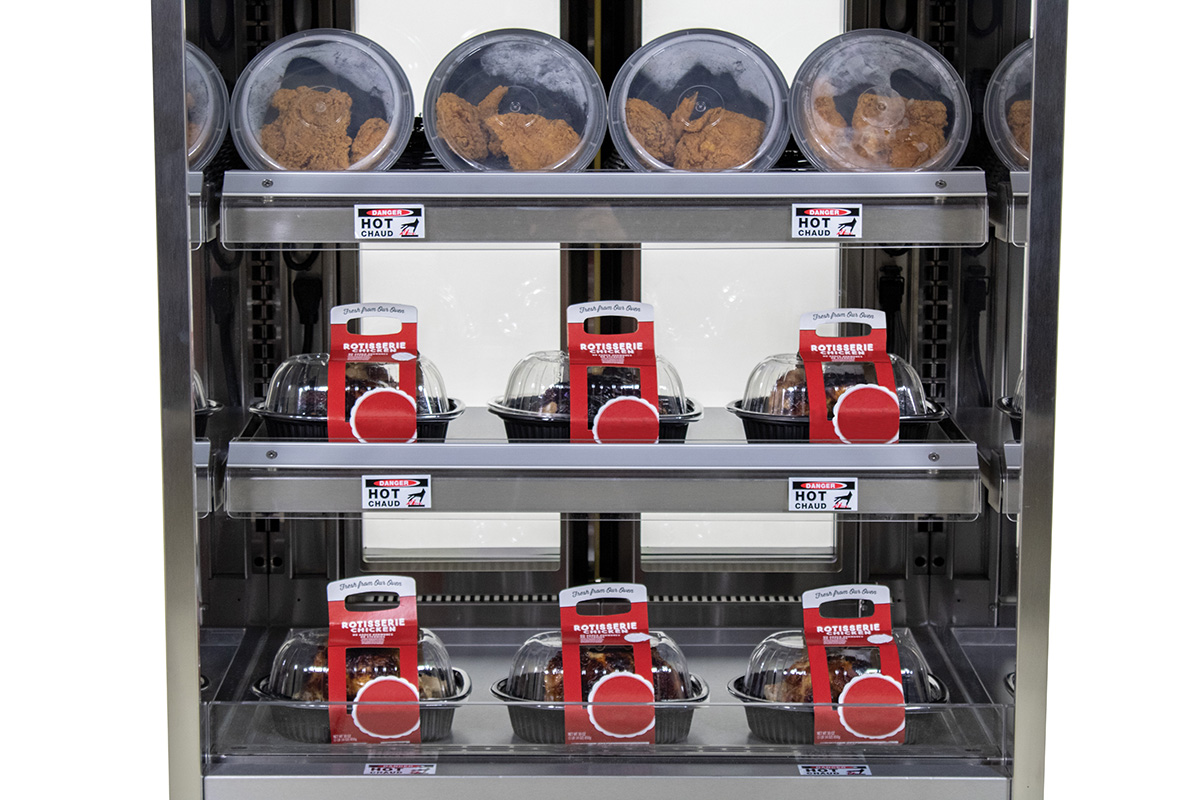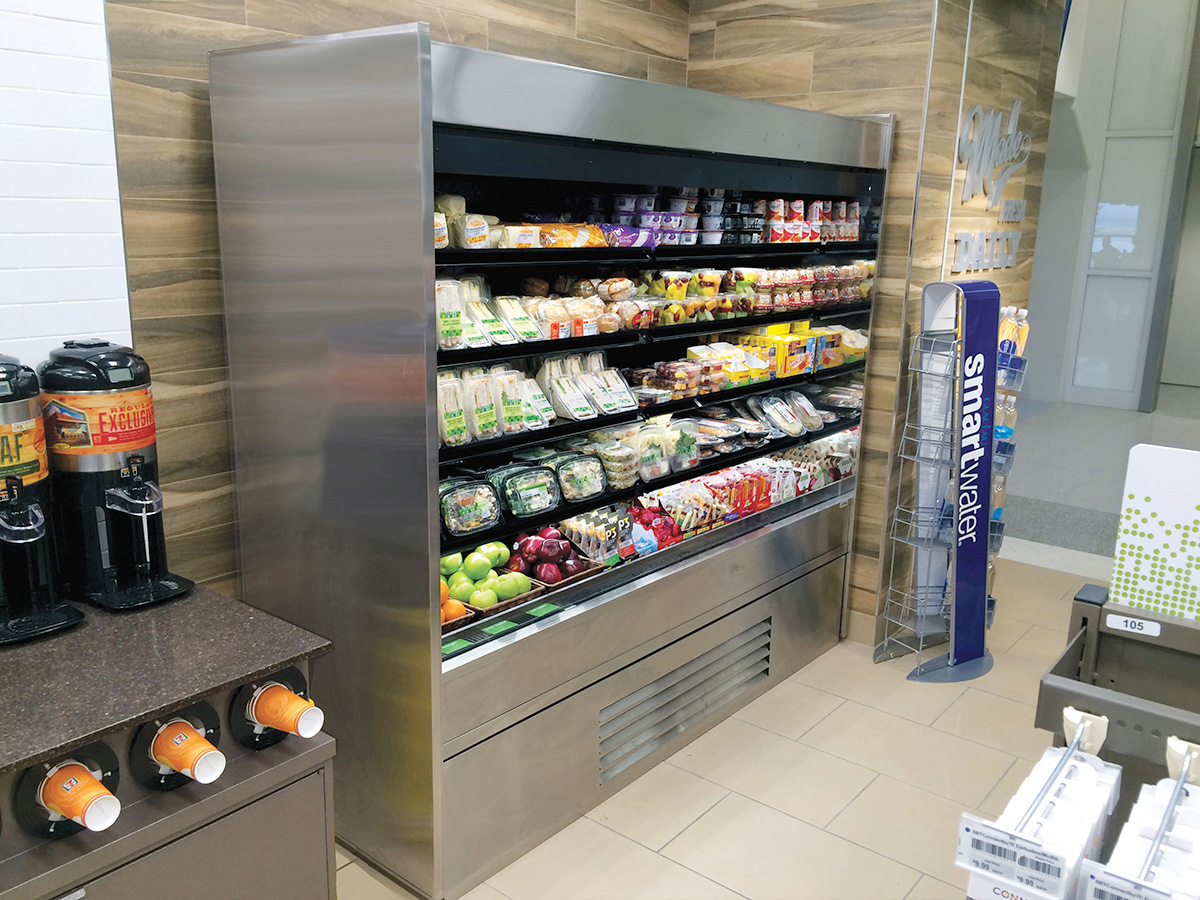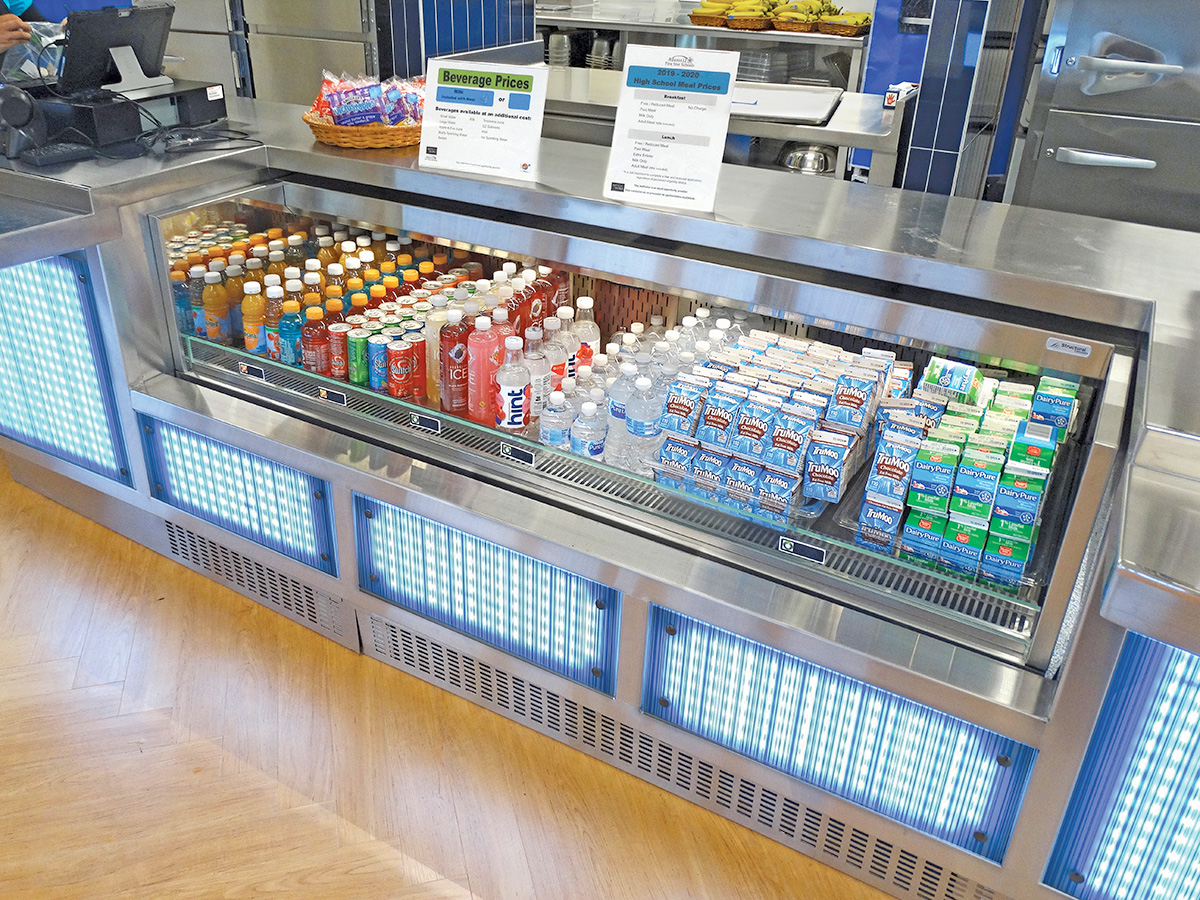As both operational and perishable food costs continue to be critical to sellers of fresh food, Structural Concepts Corporation (SCC) recently commissioned two independent studies with Intertek Laboratories and The National Food Lab to determine the total costs of ownership associated with its own and other heated and refrigerated food merchandisers.
Intertek, a 130-year-old global organization specializing in assurance, testing, inspection, and certification services to ensure safety and quality, evaluated the time to uncrate, position, and start up the equipment, measured energy costs to operate the equipment, and the time to carry out cleaning and maintenance requirements recommended by each manufacturer. Other factors, including equipment acquisition price, referring to the end-user’s purchase price, and expected life of operation, projected to be 5 years, were also considered as part of the study.
Refrigerated displays in the multi-shelf and under counter grab & go categories, as well as heated multishelf grab & go merchandises – all representative of current market needs and increasing demand – were part of the evaluation.
The overall findings showed SCC to have the lowest total cost of ownership over a 5-year period as compared to the other manufacturers. In each of the three equipment categories studied, acquisition price was similar in at least 2 of the 3 manufacturer models while the difference in the 5-year total cost of ownership widened among each of the manufacturers, ultimately favoring the SCC units.
The study indicated that an initial acquisition price comparison does not provide a full cost of ownership narrative as some models with the lowest acquisition price experienced the highest or near the highest total cost of ownership. Differences in energy consumption, maintenance, and product loss costs contributed to the highest variations in total cost of ownership for the models that were evaluated.
With food costs on the rise, foodservice operators struggle to maintain their margins, SCC enlisted The National Food Lab, to conduct a holding chamber shelf-life study involving equipment from three manufacturers of refrigerated and heated food display merchandisers.
 Structural Concepts Model B3632H-3686The study focused on refrigerated displays in the multi-shelf and under counter grab & go categories, as well as heated multi-shelf grab & go merchandisers, to validate and compare the quality of each food type placed in each of the respective manufacturers’ holding containers over time. Within the refrigerated application, the goal was to identify the level of foodborne bacteria proliferation in packaged fresh foods to demonstrate the impact of the refrigeration cycle on product shelf life. The heated units were assessed to distinguish the sensory acceptance of packaged fresh foods during a 4-hour display per
Structural Concepts Model B3632H-3686The study focused on refrigerated displays in the multi-shelf and under counter grab & go categories, as well as heated multi-shelf grab & go merchandisers, to validate and compare the quality of each food type placed in each of the respective manufacturers’ holding containers over time. Within the refrigerated application, the goal was to identify the level of foodborne bacteria proliferation in packaged fresh foods to demonstrate the impact of the refrigeration cycle on product shelf life. The heated units were assessed to distinguish the sensory acceptance of packaged fresh foods during a 4-hour display per
 Structural Concepts model B8832 3997
Structural Concepts model B8832 3997
The National Food Lab enlisted trained descriptive panelists to individually rate the food product samples’ attributes on a 15-point scale. The individual scores were collected to reach consensus scores. The panelists also rated each sample as acceptable, borderline, or unacceptable in quality based on differences from the initial sample evaluation.
In summary, pathogens were not found in any product stored in any of the three manufacturer’s refrigeration chambers. As compared to the other manufacturers, the SCC heated units overwhelmingly had the longest shelf life for 5 out of the 6 food products tested including breakfast sandwiches, spinach artichoke souffle, pizza, fried chicken strips and fries, and breakfast plates.
 Structural Concepts Model CO63R UC0058. Structural Concepts products that were involved in the independent studies include a refrigerated self-service case, refrigerated counter case, and a heated self-service case.In addition to having the longest shelf life for most food products evaluated, SCC units also saw the lowest overall percentage of change in the quality of food over time, confirming that the food in SCC’s heated displays remain fresher during a 4-hour duration. The study also established that SCC refrigerated merchandisers allow store operators to safely display food products through the recommended shelf life.
Structural Concepts Model CO63R UC0058. Structural Concepts products that were involved in the independent studies include a refrigerated self-service case, refrigerated counter case, and a heated self-service case.In addition to having the longest shelf life for most food products evaluated, SCC units also saw the lowest overall percentage of change in the quality of food over time, confirming that the food in SCC’s heated displays remain fresher during a 4-hour duration. The study also established that SCC refrigerated merchandisers allow store operators to safely display food products through the recommended shelf life.
Additional cost scenarios related to the quality and safety of the food beyond waste and loss included the longer-term labor expenses involved in restocking the merchandiser. Hence, if the same amount of food is expected to be offered to the public and kept hot throughout all existing dayparts, the other manufacturers that were tested will require incremental labor costs to replace and refill as compared to SCC due to their higher spoilage rates.
In conclusion, costs associated with starting up the equipment, ongoing operation, and upkeep of the equipment, as well as safely displaying fresh food over extended periods were critical considerations in the total evaluation of the overall lifespan of a fresh food merchandiser.
These factors are especially essential to consider after the first year of acquisition to ensure that profit expectations from the equipment are being met year after year.
To learn more about how SCC can minimize energy consumption, including preventing food waste and shrinkage, please contact Danielle McMiller, Vice President of Marketing, This email address is being protected from spambots. You need JavaScript enabled to view it. to receive the full Total Cost of Ownership Report.



